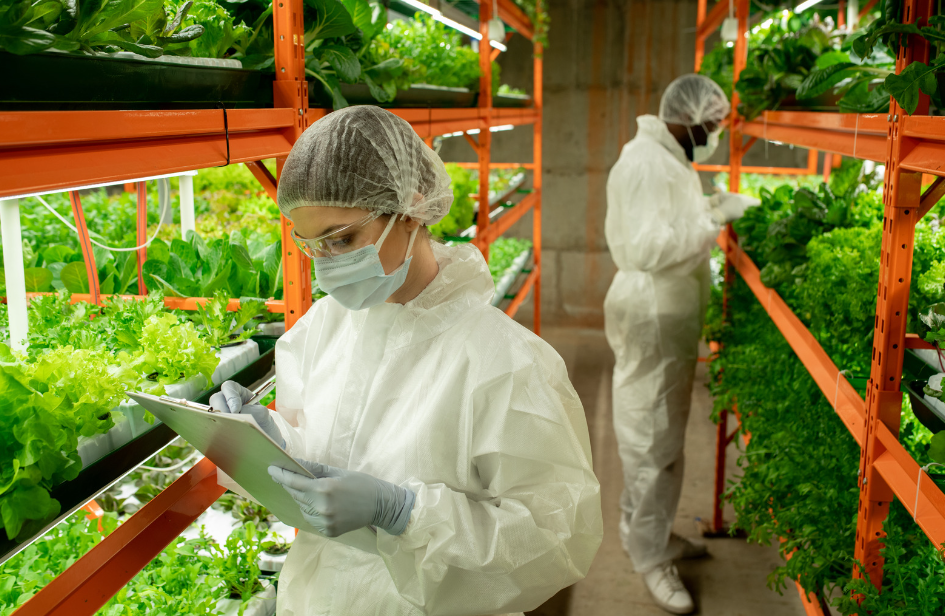How to Start a Vertical Farm

This post is also available in:
This post is also available in:
![]() Español (Spanish)
Español (Spanish) ![]() Français (French)
Français (French) ![]() Deutsch (German)
Deutsch (German) ![]() Nederlands (Dutch)
Nederlands (Dutch) ![]() हिन्दी (Hindi)
हिन्दी (Hindi) ![]() العربية (Arabic)
العربية (Arabic) ![]() Türkçe (Turkish)
Türkçe (Turkish) ![]() 简体中文 (Chinese (Simplified))
简体中文 (Chinese (Simplified)) ![]() Ελληνικά (Greek)
Ελληνικά (Greek) ![]() Português (Portuguese (Brazil))
Português (Portuguese (Brazil))
All the steps a farmer needs to consider for starting a vertical farm
Vertical farming is considered one of the most innovative cultivation methods in the world.
The idea is clear and straightforward: to produce food where people live, reducing transportation costs and carbon footprint.
To better understand vertical farming, please check the previous article (“What is vertical farming”).
Is Vertical farming necessary, and why?
In a planet where the population is growing rapidly and moving towards big cities, the land available for crop production is decreasing, and soil fertility, vertical farming can become an excellent alternative to traditional agriculture. Let us be clear: this is not THE solution, but one of the solutions (a good solution). Vertical farming will not substitute land or soil. Traditional and vertical farmers can work together to provide food without furtherly exploiting our planet’s resources, avoiding deforestation and land exploitation.
In Italy, the number of farmers fell from 50% of the population in 1950 to 3% today (source: Il chilometro consapevole – Slow Food Editore). We are generally losing interest in the most fundamental role in our society. Working the land is considered a heavy and uncertain job.
Vertical farming is changing this paradigm since many people (especially the youngest) are attracted by this innovative, technological and fascinating technique.
This article aims to help the curious to understand better what steps you need to follow to become a vertical farmer.
How to Launch your Vertical Farm
If someone wants to start a new business, he/she needs to be passionate and highly motivated. Developing a start-up takes work. It requires constant learning and a strong ability to overcome obstacles, bureaucracy, and regulations. However, creating something new could be highly satisfying, especially if it involves producing high-quality and sustainable food for our communities.
Bureaucracy
You need to understand very clearly which are the bureaucratic steps to become a vertical farmer.
– How to start a vertical farm in my country?
– Which costs do I have to bear to open my business?
– What are the food regulations in my market?
– Are there any incentives for innovative farming or start-ups?
The Market for Vertical Farming Products
New vertical farms are starting worldwide, and it is considered a booming sector. Despite this, many vertical farms close in the first years of activity, and one of the reasons may be the lack of knowledge of the corresponding-reference market.
Food is essential, and we always will need that. However, every market is different.
It is necessary to conduct several market analyses to understand which crops could be attractive for the various possible buyers. Restaurants, private consumers, wholesalers, supermarkets, farmers’ markets, and food shops are all valid alternatives. You need to know which crops they might be interested in and what price they are willing to pay.
The Technological Aspect
Every farm has different components. You can buy every component separately, or you can buy a turnkey solution. There are several technology providers worldwide, and everyone is claiming his solution is the best. You can ask for different quotations or hire a consulting agency. This second approach can be smarter, especially if they work with different partners and can provide you with the best solution for your case.
Financing – The financial planning to start a vertical farm
Once you have all the information above, you need to make a prevision about the annual operating costs (such as labor, consumables, energy, etc.) and the revenues after taxes.
Developing a business plan is fundamental to understanding the profitability of your business, but it is also useful for applying for funding or participating in public or private tenders.
To lower business risk, it would be a good idea to start small and then scale up once the business is underway. However, starting small can have some limitations, like the lack of automation, which increases labor costs, and the fact that some markets require high production volumes.
You need to consider each variable carefully before starting.
Communicate your work
Investing in communication is a good strategy to increase your bargaining power and your final selling price. Especially in a new sector like this, it’s very important to effectively communicate the health and environmental benefits of your products, giving a feeling of transparency and involving your community. Building a strong and cohesive fan base is a great starting point for surviving in the complex food market.
How to Start a Vertical Farm








































































